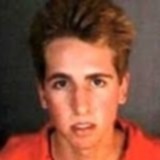
b: 1982
David Edward Attias
Summary
Name:
David Edward AttiasYears Active:
2001Birth:
May 06, 1982Status:
ImprisonedClass:
MurdererVictims:
4Method:
Vehicular homicideNationality:
USA
b: 1982
David Edward Attias
Summary: Murderer
Name:
David Edward AttiasStatus:
ImprisonedVictims:
4Method:
Vehicular homicideNationality:
USABirth:
May 06, 1982Years Active:
2001Date Convicted:
June 11, 2002bio
David Edward Attias was born on May 6, 1982, in Santa Barbara County, California.
murder story
On the evening of February 23, 2001, David Attias drove his father's 1991 Saab 9000 at high speeds down Sabado Tarde Road in Isla Vista, California. Just after 11:00 p.m., he struck five pedestrians, killing four and critically injuring one. The victims included two UCSB students, Nicholas Bourdakis and Christopher Divis, a Santa Barbara City College student named Ruth Levy, and a 27-year-old man from San Francisco named Elie Israel. The injured pedestrian was Albert Arthur Levy, Ruth's brother.
Witnesses reported that after the crash, Attias exited his vehicle and shouted, "I am the Angel of Death!" He acted aggressively, taunting bystanders as they gathered around the scene. Attias was subdued by a California Highway Patrol officer shortly after. At the time of the event, it was unclear if he was under the influence of drugs, but later blood tests revealed he had consumed marijuana and Lidocaine.
In the aftermath, Attias was charged with multiple counts, including four counts of murder. His trial began in April 2002 and drew significant media attention, particularly because of his father's career as a television director. On June 11, 2002, Attias was found guilty of four counts of second-degree murder. A week later, the jury determined he was legally insane at the time of the incident, which led to a sentence of up to 60 years at Patton State Hospital.
A memorial for the victims was later placed in Little Acorn Park, close to the site of the crash. During his time at Patton, Attias received treatment for various mental health issues, including bipolar disorder. In May 2012, he sought a transfer to an outpatient facility, claiming he had his condition under control. His request raised concerns among the victims' families and the community regarding his potential danger.
On September 4, 2012, Attias was conditionally released into a supervised outpatient treatment program.